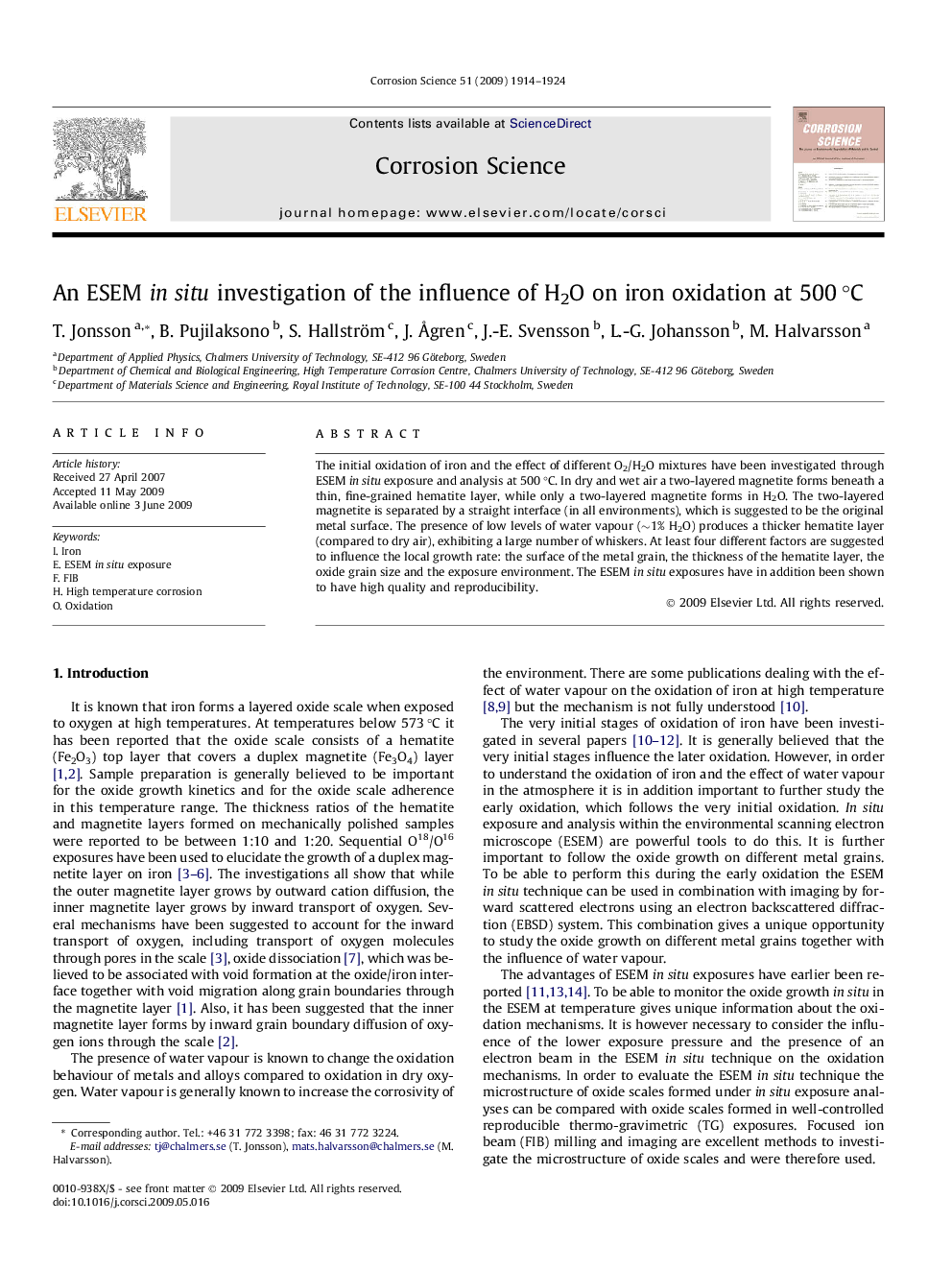| Article ID | Journal | Published Year | Pages | File Type |
|---|---|---|---|---|
| 1470895 | Corrosion Science | 2009 | 11 Pages |
The initial oxidation of iron and the effect of different O2/H2O mixtures have been investigated through ESEM in situ exposure and analysis at 500 °C. In dry and wet air a two-layered magnetite forms beneath a thin, fine-grained hematite layer, while only a two-layered magnetite forms in H2O. The two-layered magnetite is separated by a straight interface (in all environments), which is suggested to be the original metal surface. The presence of low levels of water vapour (∼1% H2O) produces a thicker hematite layer (compared to dry air), exhibiting a large number of whiskers. At least four different factors are suggested to influence the local growth rate: the surface of the metal grain, the thickness of the hematite layer, the oxide grain size and the exposure environment. The ESEM in situ exposures have in addition been shown to have high quality and reproducibility.
